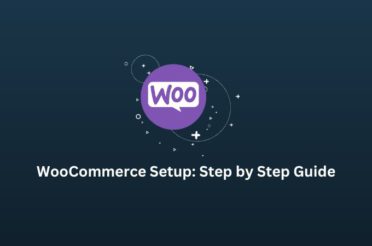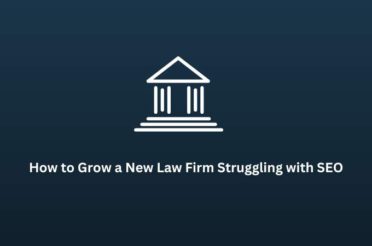What Are Google Penalties?
Penalties are the punishments Google’s Webmaster team manually imposes on websites that violate its quality guidelines.
Their Impact – Drastic drop in the websites’ ranking and targeted traffic loss. They can even result in removing a website entirely from the search results.
Another reason for a website’s rankings and traffic plummeting without any downtimes or technical SEO issues is an update in an algorithm.
Note: The impact of Google penalties is different from the impact of the negative effect of Google’s algorithm updates.
Hiring the services of the best SEO services in San Jose can help a website owner abide by Google’s quality standards and algorithm updates.
Why does Google Impose Penalties On Websites?
Penalties help Google fight spam. The search engine wants to show only the relevant results to customers, thus ensuring the best user experience (UX). The Search Engine Journal report says that Google finds around 40 billion spammy pages every day.
Google uses systems to detect spam at the “crawling stage,” restricting millions of pages from making their way to the “indexing stage.”
At the “indexing stage,” the content is checked twice for spam. The ranking of the content will depend on its quality. High-quality content ranks better and vice-versa.
As Google defines, the AI-aided automated systems ensure 99% protection against spam. Manual actions work for the remaining 1%. Google has a vast team of reviewers whose work is to impose manual actions on websites.
What Are The Manual Actions?
Manual actions are of two types:
- The ones that impact the entire website
- The ones that impact a specific section of a website or URL
Every “manual action” notification comes with a “Reason” and “Effects” information. Manual actions include the following:
- AMP content mismatch
- Structured data issue
- Site abused with third-party spam
- Spammy free host
- Unnatural links from a site
- Unnatural links to a site
- User-generated spam
- Less content with no relevancy
- Sneaky redirects
- Cloaked images
- Keyword stuffing
- Hidden text
- News and Discover policy violations
Whenever there is a new spam update, it fundamentally targets the same issues.
How To Recover From Penalties?
The best SEO agency does everything to prevent penalties. Even if a website got one, there is always a way to recover from its impact. Below are some common Google penalties and ways to recover from them.
AMP Content Mismatch
AMP (Accelerated Mobile Pages) content mismatch is when the AMP content is different from the canonical version of the web page. It is usually best to have the same essential content resources in both versions. That does not mean the text needs to be the same, but they should match topically.
Anything that a user can execute on the AMP page should also be possible on the canonical page and vice-versa.
The AMP content spam will make the ranking drop out of Google search, although the canonical version will remain unaffected.
Recovery Steps:
- Ensure that the AMP page is linked with the accurate canonical page.
- Confirm the content of the AMP and canonical pages are the same. Edit if required.
- Check that the Google and user’s view of the page is the same.
- Get the AMP and canonical pages in sync. After that, navigate to Google Search Console > Security & Manual Actions > Manual Actions and Request a Review.
- Once the site or URL no longer violates guidelines, Google will revoke the manual action.
Structured Data Issue
A website gets penalized if it doesn’t follow the Rich snippets guidelines and markup content invisible to users or irrelevant or misleading content.
This penalty has two forms:
Partial matches- affect portions of a site.
Site-wide matches- affect the entire website.
Recovery Steps:
- Update or remove any markup that violates Google’s Rich snippets guidelines.
- After making the changes, make a Reconsideration Request.
Spammy Free Host
Free Hosting is a myth. Saving money on the hosting fees will cost more when it comes to spotty reliability and spammy ads that a website owner can’t control.
Recovery Steps:
- Switch to a reputed and reliable shared hosting.
- Once shifted, make a Reconsideration Request.
Unnatural Links From A Site
Google considers unnatural links artificial, deceptive, or manipulative and penalizes them in two forms:
- Partial matches- affecting portions of a site.
- Site-wide matches- affect the whole website.
Recovery Steps:
- Remove or alter such links by adding a rel=”nofollow” attribute.
- After removing or altering, make a Reconsideration Request.
Unnatural Links To A Site
Buying unnatural links or participating in link schemes to promote ranking and website traffic violates Google’s Webmaster Guidelines and results in a penalty.
Recovery Steps:
- Use Google Search Console to download links.
- Audit links to ensure they are according to the linking guidelines.
- Remove or add a rel=”nofollow” attribute to non-conforming links.
- Deny links that you are no-followed.
- After cleaning all the links, make a Reconsideration Request.
User-Generated Spam
Blackhat SEO professionals sending spam emails daily or posting irrelevant links in comments can lead to a penalty in two forms:
- Partial matches- affect portions of a site.
- Site-wide matches- affect the whole website.
Recovery Steps:
- Specify pages that allow users to leave comments.
- Remove comments that include:
- Irrelevant links.
- Spammy usernames like “Cheap Viagra.”
- Off-topic content
- Remove all inappropriate content.
- Request a review after cleaning the site and aligning it with Webmaster Guidelines
Sneaky Redirects
Sneaky redirects show different pages to Google than what is shown to users. Such actions violate the guidelines. The penalty comes in two forms:
Partial matches- affecting portions of a site.
Site-wide matches- affect the whole website.
Recovery Steps:
- Go to Google Search Console > Crawl > Fetch as Google, then fetch all the pages from the impacted website’s sections.
- Compare the content on the web page with the one fetched by Google.
- Resolve any variations between the two to make both same.
- Remove redirects that send users to an unexpected destination.
- After fixing the issues, make a Reconsideration Request.
Cloaked Images
Cloaked images refer to the act of showing different images to Google than what is shown to users.
Recovery Steps:
- Show the same images to Google and users.
- After fixing the issue, make a Reconsideration Request.
Hidden Text or Keyword Stuffing
A website with hidden text or keyword stuffing is penalized by Google in two forms:
Partial matches- affect portions of a site.
Site-wide matches- affect the whole website.
Recovery Steps:
- Go to Google Search Console > Crawl > Fetch as Google, then fetch pages violating Google guidelines for content.
- Look for text having the same or similar color to the body of the webpage.
- Find hidden text with the help of CSS styling or positioning.
- Remove or re-do any hidden text.
- Fix or remove any paragraphs of repeated words without context.
- Fix <title> tags and alt text containing repeated words.
- Remove keyword stuffing.
- Once fixing the errors, make a Reconsideration Request.
Thin Content With Little or No Added Value
A website can be penalized for low-quality or thin content like:
- Spun or auto-generated content.
- Affiliate pages with OEM descriptions that offer no relevant information or value.
- Copied content from other websites.
- Low-quality guest blog posts.
- Doorway pages.
Recovery Steps:
- Find and remove spun or auto-generated content.
- Remove pages that don’t add value beyond what the manufacturer/retailer offers.
- Eliminate or replace any duplicate content.
- Make sure the content has an appropriate word count.
- Remove doorway pages.
- After fixing the issues, make a Reconsideration Request.
Wrapping Up
Apart from the ones mentioned above, there are several guidelines that a website must follow to avoid a penalty. To know what can cause a penalty, it’s very important to read Google’s Webmaster Guidelines. Once website owners are well-aware of the reasons behind the google penalties, they can work on improving their backlinks to maintain & improve ranking and get the targeted traffic. Businesses can also take help from the best SEO agency.
Blue Astral is one of the reliable SEO services in San Jose that can help your website to sync with the Google Webmaster Guidelines. We have experienced SEO personnel that will not let your website’s ranking drop. To discuss more on how we can help, click here: https://blueastral.com/contact-us/.









